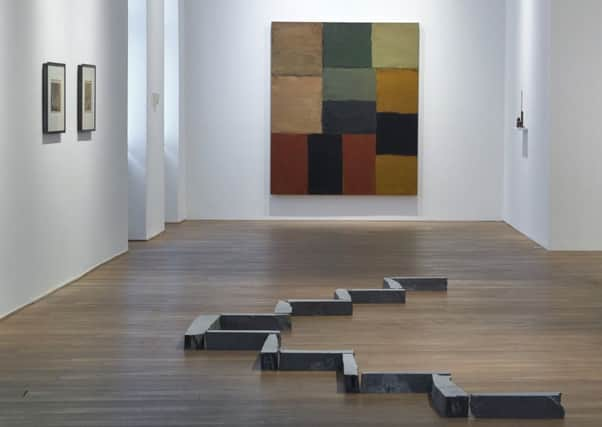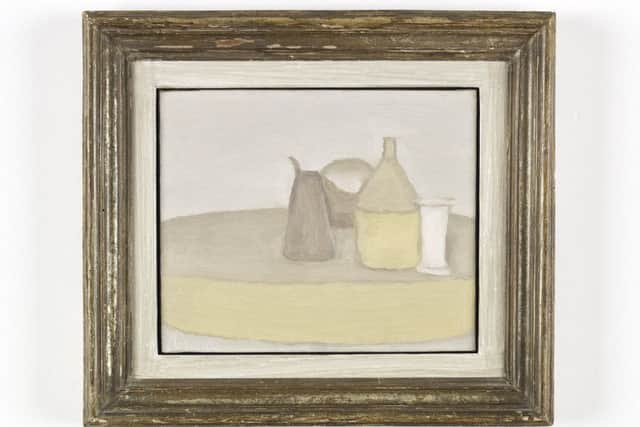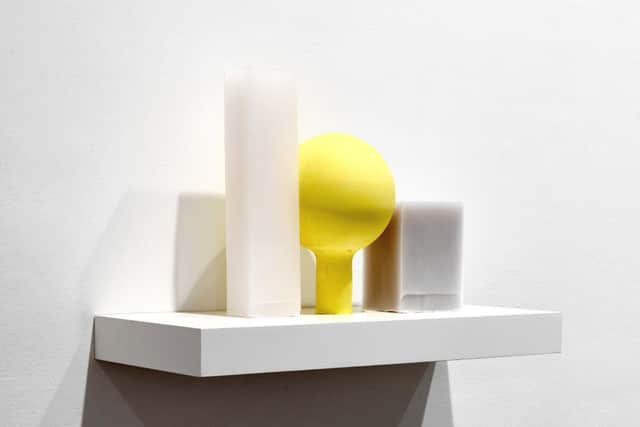Art review: Resistance and Persistence, Ingleby Gallery, Edinburgh


Resistance and Persistence | Rating: **** | Ingleby Gallery, Edinburgh
Resistance and Persistence at the Ingleby Gallery is a kind of loose poetic reflection on the work of the Italian artist Giorgio Morandi. The starting point was an encounter that the painter Sean Scully had with a small painting by Morandi in the Tate. It was the way this little picture seemed at once to belong in the Modernist dialogue of the 20th century and yet at the same time resist it that intrigued Scully. As a painter, Morandi was stubbornly figurative, or at least he painted still-life almost exclusively. Nevertheless, as Scully noticed, his work clearly has something to say which is both relevant and enduring about Modernism and indeed abstraction. “It wasn’t exciting, yet it was exciting. Exciting in its resistance, in its subversiveness,” says Scully of the little picture in the Tate.
Advertisement
Hide AdAdvertisement
Hide AdSo following this lead the Ingleby Gallery have borrowed several of Morandi’s small but eloquent still-lifes, and with them too a number of his prints which are even less familiar. These have been brought together with works by a variety of artists that might consciously or otherwise suggest a dialogue with Morandi’s subversive Minimalism, for that is what is so potent about his small paintings of bottles and jars. Stubbornly insisting they are there, they achieve their subversive effect by minimal means. His prints are even more surprising. They use the same subject matter, but their shapes are created entirely in hatched lines. They seem to shimmer as though not really fixed in space, but the elusive product of some strange, intersecting fields of force. Thus they vividly demonstrate the truth of Scully’s observation: how, in spite of appearances to the contrary, Morandi really is a modernist. He looks back to Cézanne and the root of Modernism in the tension the great Frenchman described between the apparent stability of our knowledge of the world and the manifest instability of our vision of it.


Including Morandi, there are 13 artists in the show. Sean Scully himself is represented by two of his characteristic, loosely structured grid paintings. Hung together with Morandi’s work, the analogy makes good sense. The objects in the Italian’s still-lifes are schematic shapes, often just loosely brushed rectangles that we read as vessels of some kind only by the context. Thus using similar shapes, both artists achieve a very satisfactory balance of colour, form and painted surface.
Jane Bustin seems even closer to Morandi however. She makes reliefs out of leaves of glazed porcelain, paper, copper and other materials that are arranged above and below a horizon line. Her relief Blue Notes, for instance, echoes the colours and shapes of Morandi’s Natura Morta alongside very closely, but, catching something essential in the painting, her work is an eloquent compliment and is not merely derivative.
I have never rated Rachel Whiteread’s plaster casts. They are repetitive and were not even an original idea in the first place and that goes for a cast of a pile of cardboard boxes here. Two other works by her here, Focus and Step, are different however and much more interesting. Focus, for example, consists of two vertical blocks of different heights. In shades of pink and in slightly translucent material, they are rectangular but not completely regular and flank a globe in luminous, but not translucent, yellow. Whether by accident or design, the elegant balance of shape, transparency and luminosity seems once again a nice tribute to Morandi.
Edmund de Waal echoes Morandi by making actual glazed, pot-like objects which are then arranged in enigmatic groups in wall cases. Like both Whiteread and Bustin, his use of translucency suggests the elusive light in Morandi’s paintings.


The Old Mistress of Minimalism, Agnes Martin, is represented here by a set of ten prints of different grids. There is a link to Morandi’s etchings perhaps, but the austerity of Martin’s work, at least in this form, is altogether more cerebral. However elusive, the world she evokes remains somehow tangible. One of James Hugonin’s equally austere grid paintings faces the Agnes Martin prints. Tiny brush-marks of colour locked into the mathematics of his grid at least make a gesture towards Morandi’s freedoms, but it doesn’t look as though these imprisoned brush strokes will ever be able to break out and join him.
Three of Richard Forster’s beautiful drawings of waves breaking on a sandy shore stand between the austerity of Agnes Martin’s grids and Morandi’s shifting vision of reality, but in this context in the way they appropriate landscape they are perhaps closest to Cairngorm by Richard Long, a zig-zag of 15 pieces of slate laid out on the floor nearby. This piece also works very well with Barcelona Yellow-Yellow by Sean Scully, hanging on the wall beyond it. It’s a nice relationship, but it is also a very loose one. The same is true of works here by Francesca Woodman, the American photographer who died aged just 22, and several by Roger Ackling. The Woodman photographs have a vague similarity of mood to Morandi’s paintings, but no more than that. Likewise Ackling’s small assemblies of sun-burnt wood are a kind of still-life perhaps. Such loose associations leave the show open-ended, but Morandi would no doubt have approved.
• Until 30 January